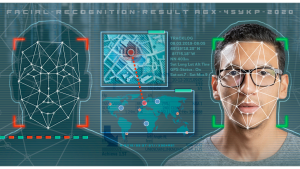Ethical Considerations in Facial Recognition Technology in Our Future Generation
Facial recognition technologies have progressed rapidly, achieving human-level accuracy in many settings. However, appropriate ethical safeguards and policy frameworks are lagging behind. As innovative capabilities outpace governance preparedness, what issues should morally-driven technology leaders prioritize amidst growing societal impacts and uncertainties? This exploration aims to spur constructive dialogue.

The Accelerating Pace of Progress
Algorithms that can match facial imagery to identifies have advanced enormously thanks to machine learning techniques, big datasets, and improved cameras. Whereas early facial recognition success rates on small databases under ideal lighting conditions were only around 60-70%, contemporary deep neural networks can exceed 97% accuracy for larger datasets under varied real-world conditions.
Several technology trends are responsible for such swift enhancements. First, the exponential growth of facial images available online, through social media especially, has massively expanded datasets usable for training the AI models underpinning facial matching. Second, graphical processing unit (GPU) innovation has increased computing capacity to handle algorithmic complexity jumps. Finally, tremendous progress in deep learning methods like convolutional neural networks that mimic biological vision processing has also boosted effectiveness.
As costs drop and capabilities rise, facial recognition adoption is accelerating across areas like biometric authentication, photo storage services, human resources, marketing analytics, forensics and surveillance. Global revenue pools are expected to surpass $12 billion annually by 2026. Off-the-shelf solutions require very little technical skill to deploy on existing camera networks and IT infrastructure.
The Duality of Promise and Peril
On one hand, facial recognition tools unlock exciting opportunities to enhance security, discover new insights, and automate tedious tasks. Applications with strong ethical foundations include:
- Finding missing persons and assisting disaster victim identification
- Protecting sensitive personal and enterprise assets from unauthorized access
- Optimizing healthcare operations and patient diagnosis potentials
- Personalizing consumer experiences based on broad attributes like age groupings
However, without appropriate safeguards and oversight, facial matching risks enabling unethical outcomes like:
- Pervasive tracking destroying personal anonymity in public settings
- Automated suppression of political activism and social group association
- Endless digital stalking severely jeopardizing personal safety
- Wrongful arrests arising from algorithmic bias issues that require more transparency to address
The power of this rapidly advancing technology demands increased governance preparedness and moral diligence by creators and institutions given societal amplification potentials.
Addressing the Five Central Ethical Dilemmas
As innovative capabilities accelerate, what crucial issues should morally driven technology leaders and governance stakeholders focus on addressing amidst complexity and uncertainty? Here are 5 core ethical dilemmas requiring additional collaborative efforts:
Transparency
Providing clearer understanding regarding specific facial matching systems currently deployed across public and private entities, covering details around:
- Location positioning
- Ownership structures
- Date ranges of active functionality
- Underpinning algorithmic approach
Enabling more informed discourse around where, when and which facial recognition technologies are operating.
Explainability
Instituting internal audit protocols for accuracy metrics, decision-making pathways and dataset biases to promote accountability.
Consent
Implementing granular permission structures before capturing, storing or sharing facial data inputs with clear opt-in requirements.
Bias
Expanding proactive testing capabilities to catch uneven algorithmic error rates tied to gender, ethnicity, age or other attributes earlier.
Oversight
Introducing independent auditing mechanisms and external panels reviewing usage contexts akin to regulations covering other powerful technologies like medical devices and autonomous vehicles.
Navigating the Winding Road Ahead
Technology rarely evolves linearly. Unpredictable capability leaps can outpace the capacity of human systems to adapt appropriately. This underscores the need for persistent inclusive dialogue between technology developers, policy experts, ethicists and civil society to maintain balance.
As facial recognition usage spreads, new challenges will surely emerge. But by pooling collective intelligence around opportunities and risks, responsible integration pathways can take shape – fused from technical precision, regulatory wisdom, and moral courage.
The acceleration of algorithmic facial analysis tools presents daunting questions without perfect solutions. However, through partnerships grounded in good faith, patience and a shared sense of obligation to constructive progress, answers adequate for this moment will gradually reveal themselves.
An Invitation to Co-Create the Future
Technological disruption demands cooperation. Although uncertainty will persist, progress arises from assembling diverse vantage points to illuminate multidimensional issues. Every voice carries value in disseminating balanced policies and ethical practices.
This call for collective action reaches all technology developers tasked with immense creative potential, public and private institutions charting governance protocols, and citizens participating in democracies worldwide as the ultimate decision locus.
By consciously aligning innovation objectives with moral principles, facial recognition systems can hopefully catalyze societal flourishing instead of compounding risks. Despite an undoubtedly winding road ahead, if we listen and learn together, human dignity can stay entwined with technological change.
Leave a Reply